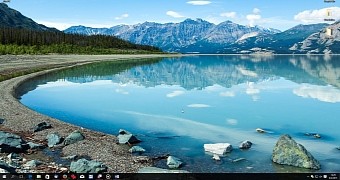One of the problems with Windows 8 was that many users didn’t know how to get around the operating system and turned to all kinds of apps to bring back features that Microsoft removed on purpose, such as the Start menu.
But with Windows 10, the Redmond-based tech giant is trying to fix all of these not only by bringing back features that were highly appreciated by users of other Windows versions but also by improving them based on feedback received from testers across the world.
And making Windows 10 familiar was a priority, with Windows chief Terry Myerson saying in an interview with CNNMoney that “familiarity is critical” for the new operating system because “we want millions of happy and engaged Windows customers.”
Myerson touted the Start menu and the taskbar as the more familiar features of Windows 10, explaining that there’s no learning curve for the new operating system, as compared to Windows 8, when users had to learn to perform a number of things without the features they were used to in Windows 7.
“We want people to love Windows”
Microsoft’s CEO Satya Nadella explained that, with Windows 10, the company is trying to build an operating system that’s loved by all of its users, not only because it works and feels great but also thanks to the fact that it helps them get stuff done.
“We want people to love Windows on a daily basis. We want to make Windows 10 the most loved version of Windows,” Satya Nadella said. “We want to move from people needing Windows to choosing Windows and loving Windows. That's our goal.”
Microsoft wants to bring Windows 10 on 1 billion devices by 2017, and upgrading PCs that are running Windows 7 and 8.1 is a priority, Nadella said on several occasions, so offering them a familiar desktop is indeed critical. It remains to be seen, however, how many of these users will actually give up on their current OS version for the new Windows 10 in the next couple of years.

 14 DAY TRIAL //
14 DAY TRIAL //